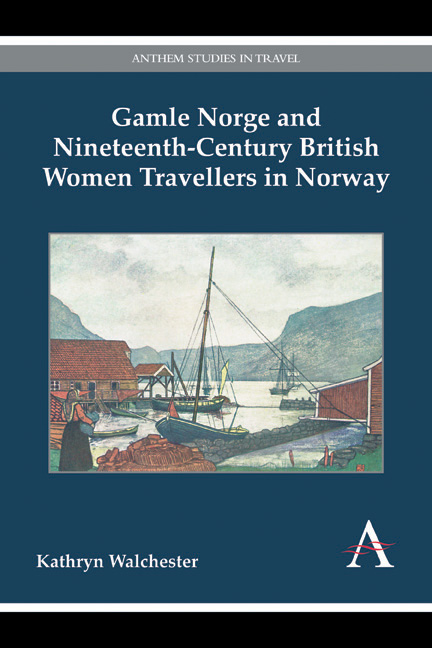Chapter 1 - Pioneers and Adventuresses
Published online by Cambridge University Press: 05 December 2015
Summary
This chapter introduces the first women who were to publish their writing about travels to Norway. Its title indicates two important themes, the first of which is the way women travellers represented themselves in their writing. Mary Wollstonecraft, the most famous early British traveller to have written about her journey to Norway, demonstrates her awareness of her pioneering status in Letters Written during a Short Residence in Sweden, Norway and Denmark for example. At this time in the final decade of the eighteenth century there were very few British women travellers in Norway. It would be over a quarter of a century until Lady Elizabeth Grosvenor would make the journey which would form the basis of her Diary of a Tour, published in 1879, and another quarter of a century until Emily Lowe travelled as an ‘unprotected female’ to the region. This chapter explores the different ways in which Lowe, Grosvenor and Wollstonecraft establish their remarkable status as women travellers in Norway in their writing. The second aspect of the title refers to the construction of Norway in these texts, its relative inaccessibility and its wild landscape requiring travellers to be adventurous. Two main themes are evident in the writing by these early female travellers to the region: firstly the sense of Norway being subject to change, particularly in relation to travel and tourism and the role of the author in anticipating and reporting this for future travellers; and secondly their constructions of Norway as a place of tradition, mystery and magic – elements which were to be presented again in versions of Norway as ‘Gamle Norge’ later in the century.
This chapter is comprised of three sections: The first addresses the circumstances of travel of these early travellers and describes the changes which occurred between the publication of Wollstonecraft's text in 1796 and My Norske Note Book, which was published anonymously in 1859. The second section considers the way in which these writers represented themselves in their texts. My presumption, in drawing attention to the narrative persona of the travelogue, is that travel texts cannot simply be read as autobiographical and that a simple association between author and narrative voice cannot be assumed.
- Type
- Chapter
- Information
- Publisher: Anthem PressPrint publication year: 2014



